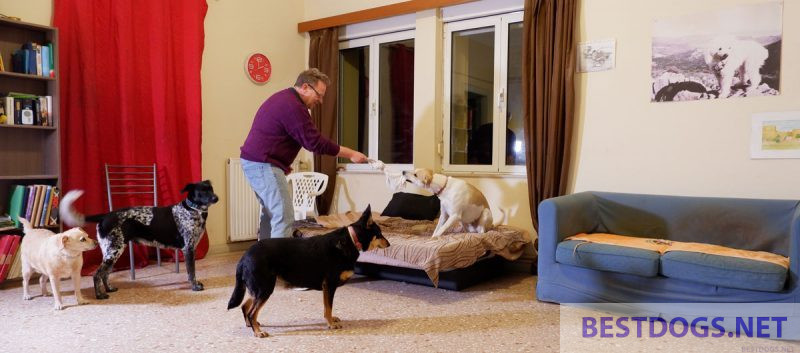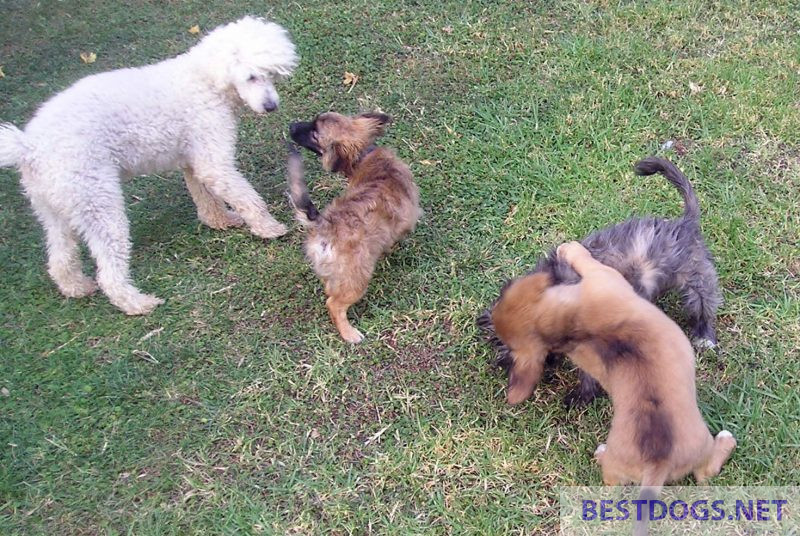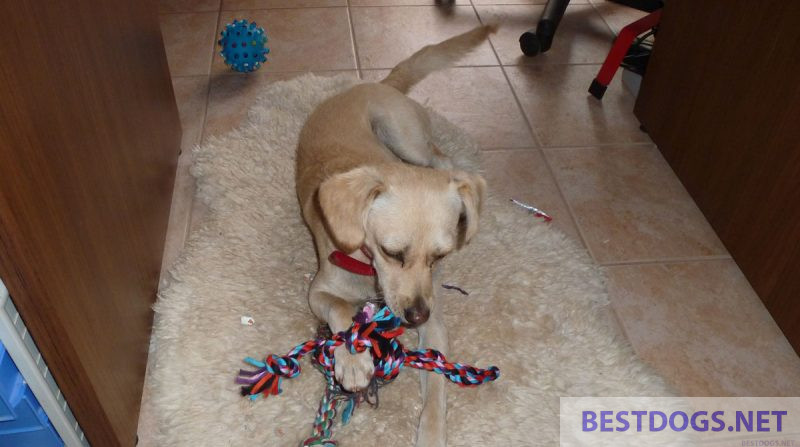Behaviour shaping of dogs using the ‘clicker’ and other tools.
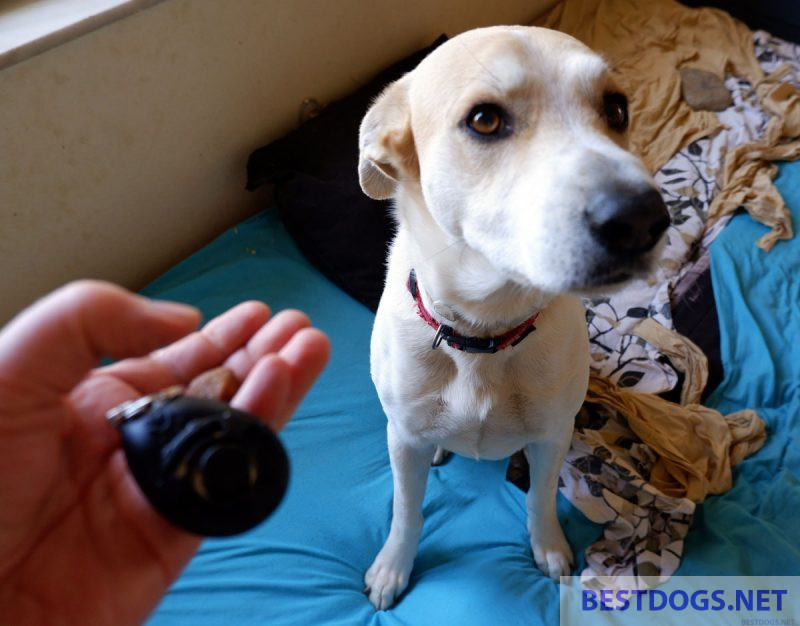
Techniques for shaping the dog’s behaviour
Table of Contents
The use of punishment and negative reinforcement can exacerbate a dog’s problems, increase its fear and make its response much worse.
Positive reinforcement, on the other hand, can be extremely effective in encouraging desired behaviour and reshaping behaviours that need to be changed.
Positive reinforcement:
The behaviour is followed by something the dog likes or needs, for example, a small treat.
Negative reinforcement:
The behaviour is followed by the removal of something unpleasant for the dog, for example, a noisy child running away.
Positive punishment:
The behaviour is followed by something the dog doesn’t like, for example shaking him or grabbing his neck.
Negative punishment:
The behaviour is followed by removal of something the dog likes, for example, being isolated for jumping on people in another room.
Flooding:
The dog is placed in its fear situation with no way to escape. For example, a dog that is afraid of children is placed in a crate in the middle of them.
Caution: Punishment and flooding can have negative consequences:
The behaviour may only be suppressed and not changed, and may reoccur later. In this case, the unwanted behaviour is often worse than it was originally.
Dogs that are excessively punished or flooded by a real or perceived fearful or threatening stimulus may withdraw completely. Such dogs may freeze in fright and lose muscle tension completely. This is often accompanied by signs of stress.
In contrast, ‘Positive Reinforcement’ can be extremely effective in suppressing desired behaviour and shaping behaviours that need to be changed.
Clicker training for positive reinforcement
The idea of using positive reinforcement may be very appealing, but perhaps one or the other have tried this in the past with limited success. If this is the case, then help is at hand, because more than thirty years ago people began to use the principle of positive reinforcement of behaviour from different animals by means of sounds in combination with a reward. It started with the use of whistles by trainers of marine animals and eventually reached the world of dog training, where the whistle was replaced by the ‘clicker’.
The ‘clicker’ looks not unlike a small remote control and makes a clicking sound when pressed. It is nothing more than a usual sturdier clicker.
The clicker is superior to anything else in its effectiveness in indicating desired behaviour, as the quick, sharp sound is easily recognized by the dog and is particularly effective when used in conjunction with a treat. The ‘click-clack’ sound thus means that a treat or something else nice is about to come !
It is up to the owner to decide which treat to use – but it is recommended to use treats that are low in calories and as tasty as possible.
The clicker is used exclusively for positive reinforcement and often shows amazing results.
The owner’s voice can become dulled in the dogs’ minds as they hear it with great variation throughout the day. In contrast, when the clicker is used as a positive reinforcer, it unmistakably signifies to the dog that he has done something right.
When a food reward is coupled with the sound of the clicker, the dog not only recognizes that it has done something right, but experiences additional positive reinforcement as its brain releases the chemical ‘reward’ dopamine in anticipation of a treat. This is followed by yet another surge of dopamine when he receives the treat.
How the clicker works
The clicker is an extremely effective tool for influencing behaviour because not only does it give the dog a clear message that it has done the right thing, but the associated release of endorphins also supports positive emotions. This means that it can be the key to changing any behaviour that was previously thought to be untrainable.
This is especially true for dogs with behavioural problems. The clicker is a tool that helps one to train the dog more effectively and efficiently while making him feel good.
One should also remember that the behaviour can be furthered positively reinforced by displaying a positive attitude oneself and rewarding the dog with praise. This can be done, especially if you do not have a clicker at hand at that moment.
If the dog does not respond well to food as a reward, you can also use toys – balls, for example. This can work just as well, and many of the professional search and detection dogs are trained similarly.
Introduction of the clicker
Before starting clicker training, make sure that the dog is not afraid of the sound. If he is afraid of it, you may be doing him more harm than good. If you use the clicker in these circumstances, the dog will see it as a punishment rather than an announcement for reward.
So if the dog is anxious about the clicker, it takes time to ease his anxiety. To do this, initially use only a very weak, quiet clicker or muffle the sound with a piece of clothing or cloth.
If the dog is not afraid of the sound, you can immediately start with the ‘click and treat’. To do this, throw a treat on the floor and when the dog approaches it, click the clicker, and it will eat it. This is repeated until the dog has associated the click sound with the food.
In the next phase, you give the dog simple commands. These should preferably be ones he already knows and each time he does the command correctly, you click and give him a treat.
Repeating this procedure with the command word a few times not only reinforces these behaviours, but also teaches the dog that the sound of the clicker means he has done everything correctly.
These sessions should be short and with regular breaks because the dog needs to experience lasting success. This is not the case if he gets bored or loses concentration.
Working with the clicker
The first click should be made casually, without the dog having to do anything in particular. You click and immediately give the dog the reward, e.g. the treat. This process should be repeated several times.
It is best to take the treat in the hand only after the click and then give it to the dog immediately. The dog should not be targeted with the clicker, but the clicker should be held as inconspicuously as possible. Also, do not look the dog in the eye or talk to him while doing so.
To check whether the dog has already learned the conditioning, try it out with a click when he is doing something else. As soon as he reacts to the sound of the clicker and is expectant and attentive, he is conditioned to the click and the first clicker training sessions can be started.
However, under no circumstances should the clicker be used for other purposes, such as calling the dog to you or just to get his attention without giving him a treat. The clicker should only be used to announce that a treat or other reward is coming.
Other tools
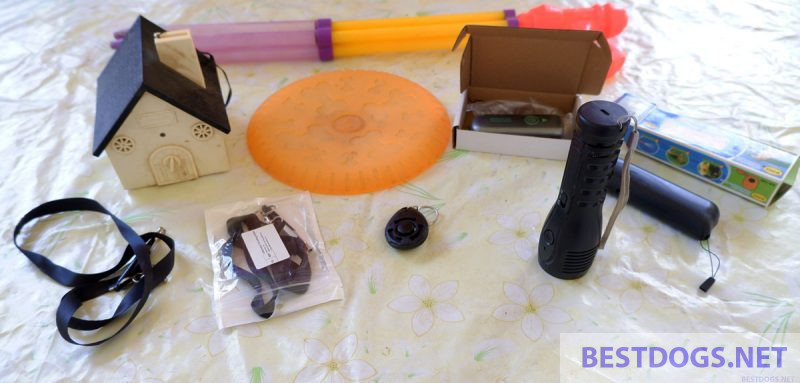
Dog whistle
A dog whistle is very useful because it goes further than shouting and always sounds identical to the dog, regardless of who is whistling. The whistle always sounds the same and is therefore neutral and above all emotionless. It carries further than the human voice, and is therefore also better suited for unclear terrain or in adverse weather.
There are also ultrasonic whistles that are only audible to the dog and are therefore practically silent for humans, so that nobody can be disturbed.
However, the dog will of course only listen to whistles if he is conditioned to do so.
A dog that is just acting out its hunting instinct and is following a scent with its nose or has already spotted the prey can hardly be called off with the voice, as the strong stimuli at that moment push everything else into the background. With the whistle, you can perhaps reach him better.
Conditioning to the whistle
The dog gets a treat every time a double whistle is given. Then we call our dog with the double whistle every time he gets food, or we play with him.
After the dog has realized that the double whistle results in a positive action, the exercise is gradually continued under more difficult circumstances. First the dog should always come on the double whistle inside the house, then in the garden, then with some distraction and finally on walks with increased distraction.
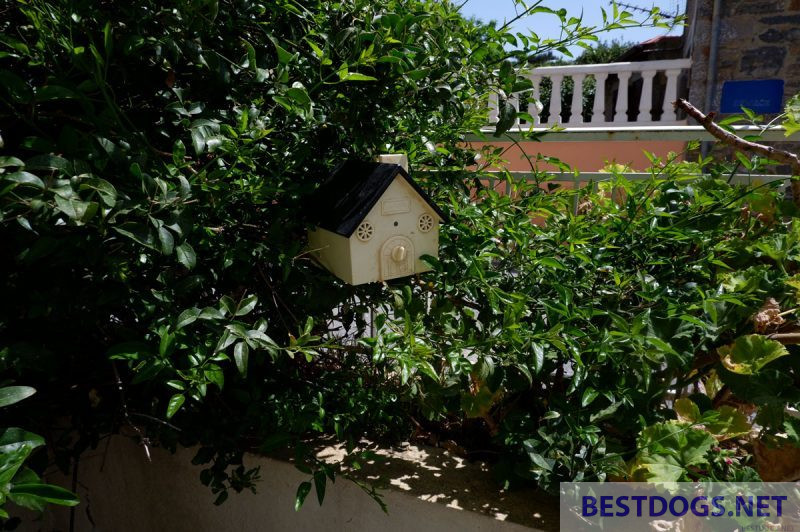
Ultrasonic training device
An ultrasonic training device is a small hand-held unit that emits ultrasonic sounds, which can also often be combined with strong light. This can be used to repel vicious dogs and in the milder setting also for training.
In the case of unwanted dog behaviour, for example excessive barking, the use of the ultrasonic training device results in ‘positive punishment’, i.e. the dog’s action is disturbed or interrupted.
For the garden area, there are also stationary, waterproof ultrasonic devices that can be mounted on the garden fence to the neighbour and emit an ultrasonic sound that disturbs the dog when it barks, but which is practically undetectable by the human ear. This often leads to a significant reduction in the dog’s barking at the garden fence, which means that neighbours or passers-by are less likely to be disturbed.
Use and result of an ultrasonic training device for excessive dog barking:
Throwing chain, training disc, rattle box, water gun
All these things are also ‘positive punishments’ because they cause something unpleasant for the dog, which can be linked through specific conditioning.
The chain, disc or the rattle box should be thrown near the dog so as not to hurt it. The rattle box, for which an empty and glued aluminium drinks can is also suitable, is filled with a few small stones or coins that make a noise.
The rattling and clattering of these objects helps to discourage the dog’s behaviour or to interrupt it when it starts doing something undesirable.
The water gun has also proven effective for interrupting unwanted behaviour. Here, however, care should be taken not to entice the dog to come into contact with the water (for example, for swimming).
When used correctly, these tools can be useful, but caution and good sense are required, as skittish or noise-sensitive dogs may become distraught or even panic, while others, if used incorrectly, will soon become numb to the rattling and the use then becomes pointless.


